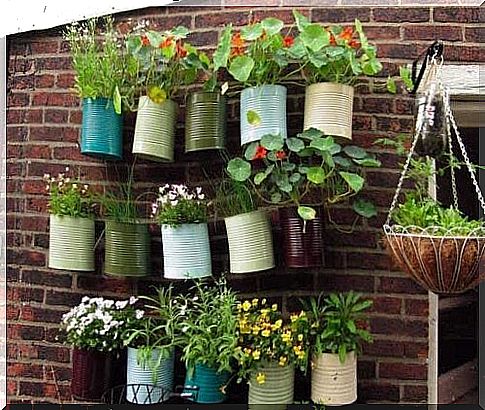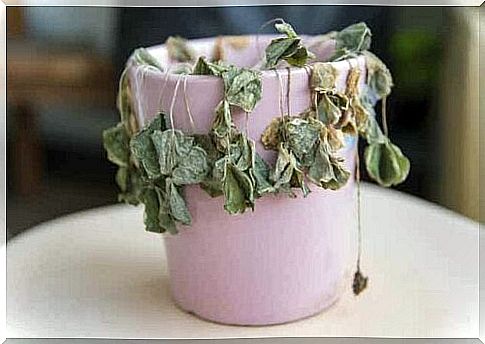A Garden On Your Terrace: The Best Tips

More and more people are opting for a garden on the terrace. However, a number of mistakes are often made when we get started with these gardens. Fortunately, there are ways to avoid these mistakes, especially if you’re a beginner. Are you ready for a garden on your patio?
In this article, we’ll share a few tips that will help you succeed and feel the joy of growing your own food.
People usually assume that they can garden simply by watering the plants, fertilizing the soil and placing the plants in sunny places. But these basic ideas don’t always work. There are a few factors that you have to take into account.
A garden on your terrace: 10 tips to succeed
You may want to start buying pots, soil and seeds right away and get started! But have some patience. First, think about what you want and can grow by evaluating the available space and its features.
1. Sun
Depending on the orientation of your patio, you should choose shade-loving or sun-loving plants. Vegetables, such as broccoli, zucchini, onion, artichoke, cucumber, tomato, parsley and beans, need five to six hours of direct sunlight each day.
Swiss chard, celery, lettuce, cabbage, spinach and radishes, on the other hand, don’t need a lot of sunlight. Even sun-loving plants should be covered with larger plants in the initial growth phase to prevent the roots from drying out or burning the first leaves.
2. Jars
Fast-growing varieties, such as lettuce, cabbage and spinach, require 6- to 12-inch pots. You can place several pots in a tall or square pot, four inches apart.
Fruiting vegetables, such as tomatoes, zucchini, aubergines or cucumbers, should be planted in pots 40 to 45 cm deep.
Make sure the pots have drainage holes so excess water can seep out. Measure the available space on your terrace. Measure the available space on your terrace. Decide how many pots you are going to place and also how big they are.

3. Potting soil for your garden on your terrace
Place 1 inch (2.5 cm) of gravel or clay balls at the bottom of the pots that allow for good drainage. Water the potting soil on top of that, which should be a combination of 40% coconut fiber or rice husk, 30% soil or universal potting soil and 30% worm waste, compost or fertilizer.
If possible, also spread a thin layer of ground cover over the top layer. This provides more nutrients and prevents the water from evaporating quickly.
4. Seeds
The origin of the seeds determines the quality, size of the plant and disease resistance. Make sure they are grown locally and organically.
If you’re a beginner, it’s best to start with seedlings that you can transplant into pots. If you are more confident, only start with seeds.
5. Watch out for the wind when making a garden on your patio
Very warm winds cause your plants or the moisture in the soil to dry up quickly. In this case, you need to water them more often. If you live near the coast, the sea breeze carries salts that can attack leaves, meaning you need to protect your plants.
If your patio is very windy, you can place supports on the pots to strengthen the stems of your plants. You can also place plastic windbreaks that deflect gusts of wind. You can also place the pots closer to the wall, so that they are better protected.
6. Sowing
Direct sow plant varieties (pea, fava bean, spinach, turnip, carrot, pumpkin, cantaloupe, watermelon, bell pepper, radish and cucumber) should be sown where they will grow. They do not recover if you move the roots.
You can transplant plants that grow very slowly. For example, think of chili peppers, celery, eggplant, broccoli, cabbage, cauliflower, onion and tomato. This means you can sow them in seedbeds first and then move the seedlings to their final pots.
7. Watering
Another important tip for a garden on your patio has to do with watering. Before watering the plants, check that the soil is dry by inserting a toothpick or tapping the pot gently.
When the sound it makes is dry and clear, it’s time to water the plant again. Remember to water the plant regularly but in moderation to prevent the roots from rotting. You only need to moisten the soil, it does not have to be flooded.
8. Fertilize the topsoil of the garden on your terrace
The appearance of yellowish or reddish spots on your plant’s leaves is a sign that it isn’t getting enough nutrients. The place where they appear (edges, young leaves) indicates the nutrient it may need.
Therefore, add liquid fertilizers to the soil once a month and for each plant. Alternatively, you can add a layer of compost once a year at a ratio of 5% of the total volume of the pot.
9. Pests and Diseases
Insects such as mites, aphids, caterpillars and moths are considered pests. Viruses, fungi or bacteria are considered plant diseases.
Therefore, keep a close eye on your plants, so that you can detect any infection early. Isolate the affected plant so that it does not infect others. Treat it with natural infusions if possible, depending on the pest or disease it affects.

10. Harvest
Read for yourself about the ideal state of each fruit or vegetable you are going to harvest. Some should be harvested when ripe, while others, such as eggplant or cucumbers, should be harvested when not yet ripe.
In all cases, use scissors or a knife to cut the fruit or vegetable. Pulling it off can damage the stems.
Grow your own plants with these tips for a garden on your patio
If you have a patio, use it to grow your own fruits and vegetables. Urban farming is good for the planet because it makes cities greener, helps reduce the carbon footprint and encourages people to reuse waste.
It changes your view of the way you eat and adds a new task to your daily routine, bringing you in touch with nature.








